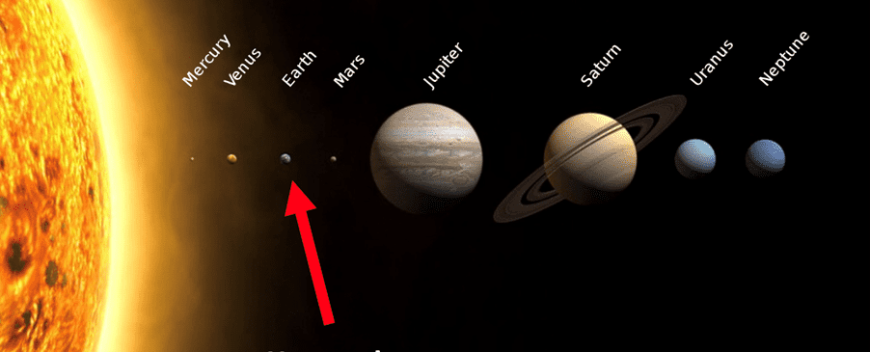By Bridget O’Brien
The universe is a big place. Our human minds probably couldn’t even begin to comprehend how far away the closest planet to Earth is! In our street (the solar system), our next-door neighbour AKA the closest planet to us is Mercury, and that is over 180 million kms away.
Although in solar system maps Venus looks to be the closest, recent calculations regarding orbits around the sun have suggested that Mercury is the closest planet to Earth more often than Venus (this is a hot topic in the astronomy world).
Mercury
Mercury is a rocky (terrestrial) planet and the smallest planet in our solar system. In fact, it’s only a little bit larger than the moon! It has the closest orbit to the sun than the rest of the solar system and is hurdling through space faster than any other planet in our solar system. So fast, that a year on Mercury would only take 88 days! Strangely, a day goes by much slower on Mercury, taking approximately 59 days (our time) to make 1 spin. Unlike Earth, it has no moon, and its atmosphere is very thin. (NASA, 2023)
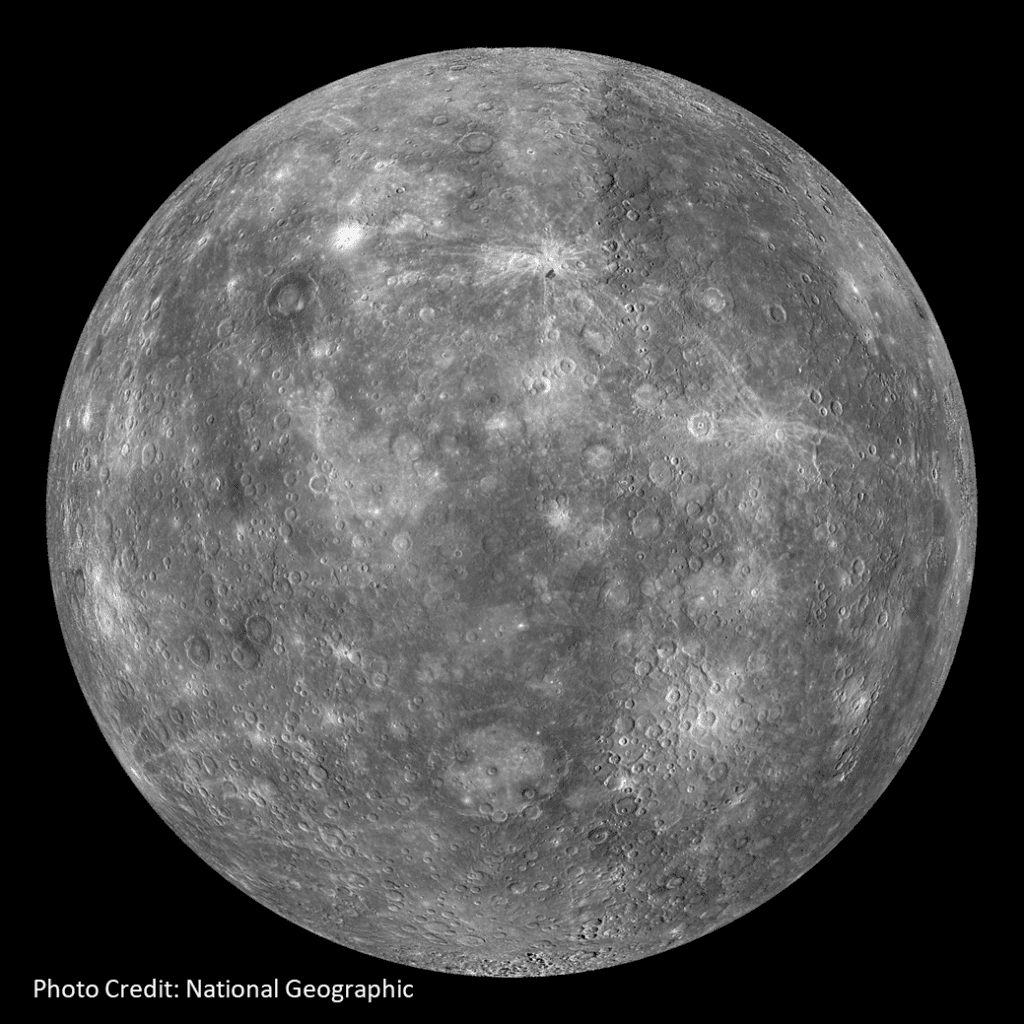
Venus
Venus could potentially be Earth’s closest neighbour as well, and it is the second planet from the Sun in our solar system. Although Mercury is closer to the sun, Venus is actually the hottest planet in our solar system. It has a very thick atmosphere filled with greenhouse gases which trap heat, and its clouds are made of sulfuric acid. It is very similar in size and structure as Earth, but Venus spins in the other direction than us! (NASA, 2023)


Earth
Our beautiful blue rock is the only place we know of so far that has living things, and the only planet in our solar system with liquid water on the surface! It’s the third planet from the sun and is roughly 150 million km away from it. Earth has a ‘protective shield’ surrounding it that keeps everything inside it relatively safe; we call this the atmosphere. (NASA, 2023)
It is interesting to think that everyone you have ever known, every beetle, bug and bunny, every car and every jellyfish, every horse and math exam and TV show, all exist only on this tiny blue rock.

Mars (the red planet)
Lookout! There’s a Martian! (not really)
Humans are somewhat obsessed with the red planet (it’s called that because the iron minerals in the soil rust, which causes the soil and atmosphere to look red). Its days are similar in length to Earth, but the years are nearly twice as long. Its surface is rugged, having been altered by volcanoes and impacts and winds. It has not one, but two moons, and as far as we know, no life, but this might have not always been the case. Exploratory missions to Mars have found evidence that billions of years ago, Mars was much wetter and warmer, with a thicker atmosphere. (NASA, 2023)
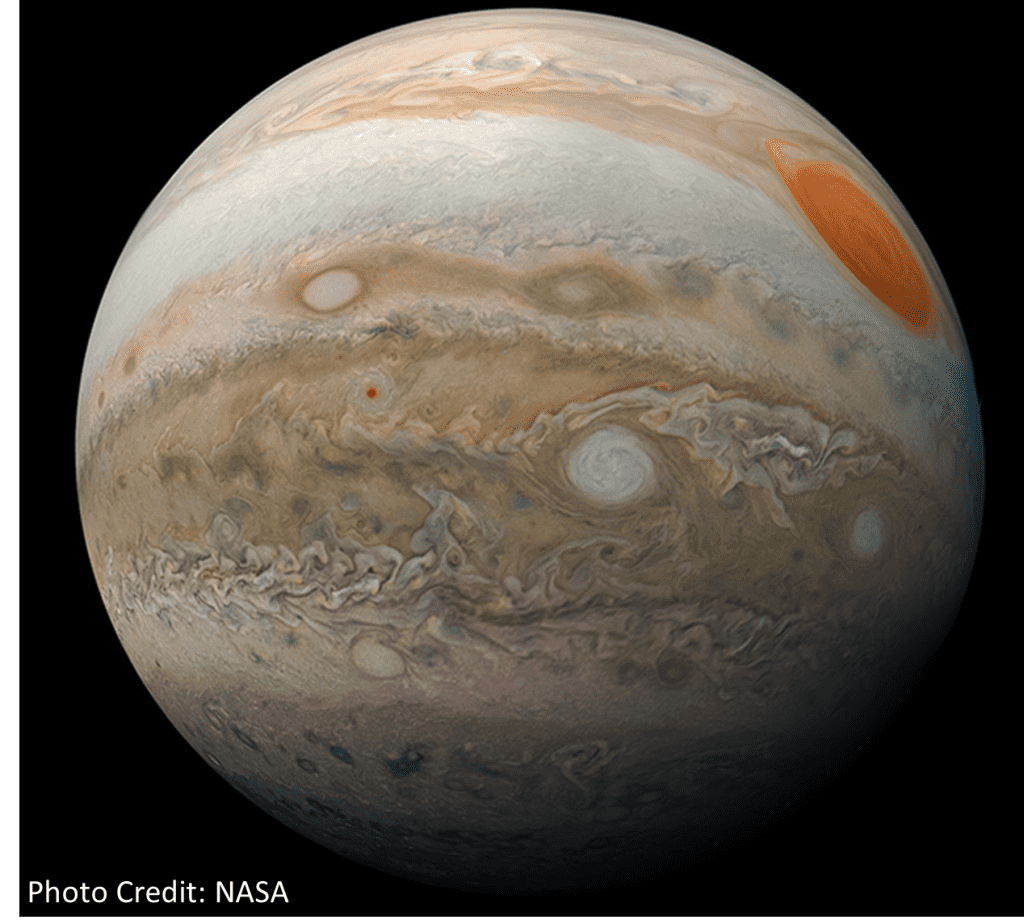
Jupiter
Jupiter is the biggest planet in the solar system, at least twice as massive as all the other planets combined! Earth could fit across Jupiter’s equator 11 times – you can think of it as Earth being the size of a grape, and Jupiter the size of a basketball. One day takes about 10 hours, and one year about 12 Earth years. Jupiter is known as a gas giant, and we don’t know if it has a solid inner core. If it does, likely it would be the size of Earth. The atmosphere is mostly hydrogen and helium. Unlike Mercury, Jupiter is not short on moons. In fact, it has 75 of them. Scientists have labelled a “Great Red Spot” on Jupiter, which is the super storm that is twice the size of Earth and has been raging on for over 100 years! It is unlikely that life exists on this planet (but we don’t know). (NASA, 2023)

Saturn
Saturn is the second largest planet in our solar system and is so large in size that it would fit nine Earths side by side around the centre (not including the rings). Like Jupiter, it is also a gas-giant, so it does not have a solid surface that we know of (perhaps a solid core though). Hydrogen and helium make up most of the atmosphere, and as far as we know there are 53-82 moons orbiting the planet. You might know this planet as ‘the one with the rings’. As far are we know, Saturn cannot support life. That being said, there is speculation that life could exist on some of the moons orbiting it! (NASA, 2023)
Uranus
Uranus (haha) is a huge planet in our solar system, about four times wider than Earth. Days on Uranus are about 17 hours long, but a year would take 84 Earth years (you probably wouldn’t even be 1 year old on Uranus!). It is an ice giant, as most of its mass is hot, dense fluid made up of icy materials. It has 27 moons that we know of, and 13 known rings around it. Uranus is special because it rotates on its side! (NASA, 2023)
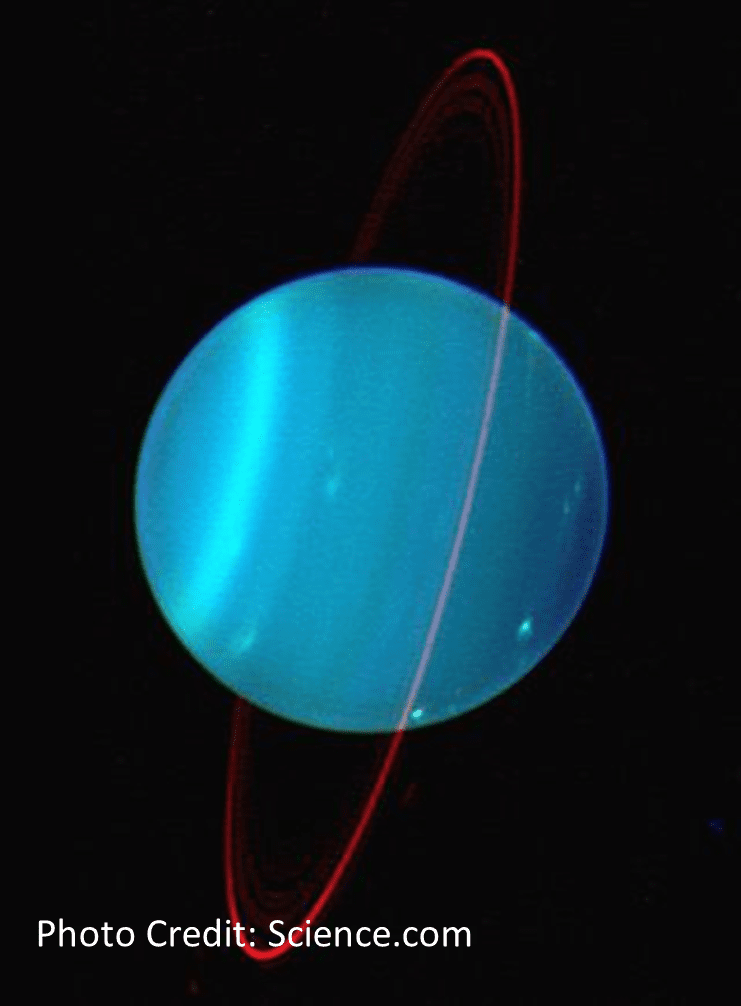
Neptune
Lucky last on our trip through the solar system is none other than Neptune! This dark, windy and cold planet is the most distant in the solar system, about 30 times as far away from the sun as Earth is. We can’t see it by naked eye, so it was only recently discovered. It is about 4.5 billion kms away from the sun and takes about 165 Earth years to orbit the sun once. It has very faint rings (at least 5), and 14 known moons. It looks blue because of the methane in the atmosphere!
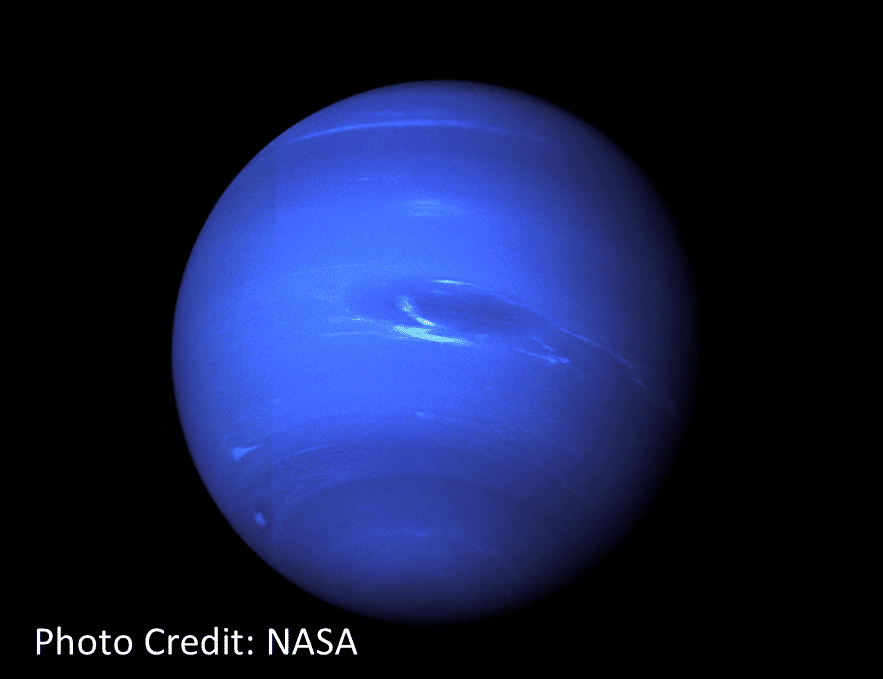
I hope you enjoyed our adventure through our solar system. If you want to see just how small we are in the scheme of things, watch this video!

